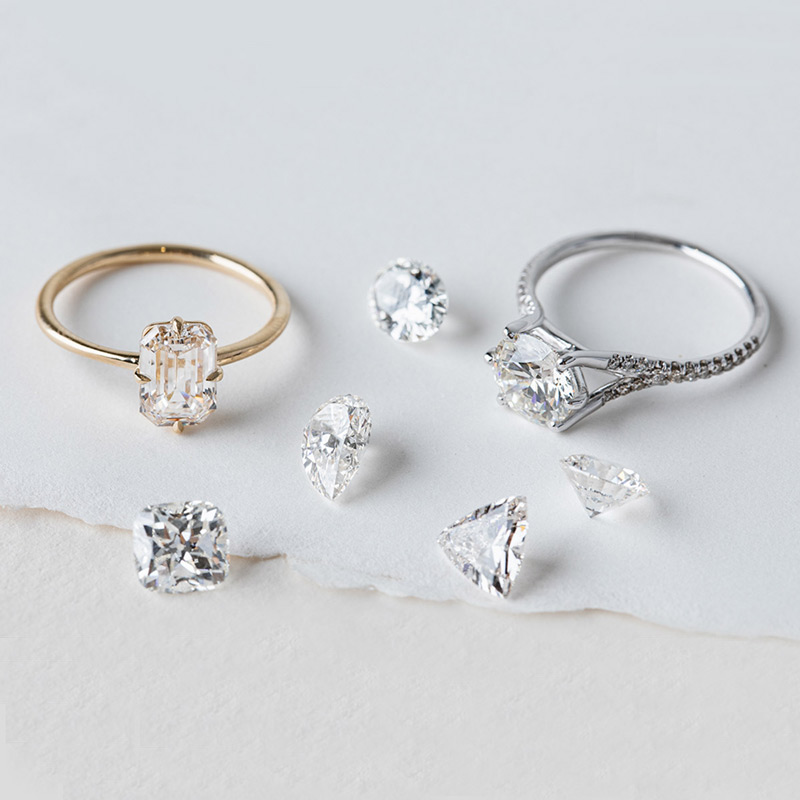In the world of lab-grown diamonds, the choice of affirmation can basically influence the acumen and worth of your gemstone. Two of the most prestigious gemological laboratories that evaluate diamonds are the Worldwide Gemological Establishment igi vs gia the Gemological Foundation of America (GIA). Understanding the qualifications between these organizations and their declaration processes is basic for anyone wanting to purchase a lab-grown diamond. This article explores the capabilities among IGI and GIA, their investigating frameworks, and what you should consider while picking between the two.
What are Lab-Grown Diamonds?
Before diving into the specifics of IGI and GIA, it’s important to appreciate what lab-grown diamonds are. Lab-grown diamonds, generally called designed or refined diamonds, are created in controlled conditions using advanced mechanical cycles. These diamonds have comparable physical and compound properties as standard diamonds anyway are conveyed in a laboratory setting. Lab-grown diamonds offer a moral and often more affordable choice rather than mined diamonds.
The Occupation of IGI and GIA
IGI Blueprint
The Worldwide Gemological Establishment (IGI) was spread out in 1975 and is one of the greatest gemological laboratories in the world. IGI gives looking into and assertion to both customary and lab-grown diamonds. Their reports are by and large apparent and are used by pearl trained professionals and customers the equivalent to assess diamond quality.
GIA Layout
The Gemological Foundation of America (GIA), laid out in 1931, is perhaps the most prestigious and striking gemological organization all over the planet. The GIA is prestigious for its rigorous and thorough assessing norms for ordinary diamonds and has actually loosened up these standards to lab-grown diamonds. The GIA’s representing precision and unwavering quality in diamond assessing is well established in the business.
Checking on Frameworks: IGI vs GIA
IGI Checking on Framework
IGI uses an exploring framework that surveys diamonds considering the Four Cs: Carat weight, Cut, Color, and Clearness. They give low down reports that outline these traits, as well as additional information like the diamond’s fluorescence and equilibrium.
Carat Weight
IGI gauges the carat weight with precision, exhibiting the size of the diamond.
Cut
IGI surveys the cut considering the diamond’s proportions, equality, and clean, notwithstanding how some battle that their cut assessing might be less stringent stood out from GIA.
Color
The color looking into process incorporates comparing the diamond to a specialist course of action of color grades. IGI’s color assessing is for the most part consistent anyway may change hardly from GIA’s norms.
Clarity
IGI assesses clearness by checking out at the diamond for interior and external defects, generally called incorporations and blemishes.
GIA Assessing Framework
The GIA’s investigating framework is renowned for its precision and consistency. They stick to extreme assessing models and their reports are extraordinarily respected in the diamond business.
Carat Weight
The GIA gauges carat weight with high accuracy, ensuring the reported size matches the diamond’s certifiable weight.
Cut
The GIA uses a total cut surveying framework that incorporates unequivocal assessments of the diamond’s proportions, clean, and equilibrium. Their assessing measures are known for being stringent and demanding.
Color
GIA’s color exploring process relies upon a thorough correlation with their lord color sets, ensuring a definite evaluation. They are often seen as having to some degree stricter color inspecting rules diverged from IGI.
Clearness
The GIA’s clearness investigating is profoundly low down, surveying all inside and outside features. Their clarity exploring is known for its rigor and consistency.
Contrasts Among IGI and GIA Authorizations
Notoriety and Affirmation
The GIA is extensively seen as the greatest level in diamond checking on, especially for standard diamonds. Its certification is often seen as more prestigious on account of its deeply grounded standing and stringent evaluating practices. IGI, while similarly good, is occasionally obvious as less rigorous stood out from GIA, particularly in the assessing of lab-grown diamonds.
Report Nuances
Both IGI and GIA give thorough reports that incorporate organized information about the diamond’s credits. Regardless, GIA reports are often enjoyed for their profundity of assessment and clarity in assessing. GIA’s quick and dirty cut auditing, explicitly, is astoundingly regarded by professionals and purchasers the equivalent.
Market Wisdom
Keeping watch, GIA-ensured diamonds are often seen as having a higher worth as a result of the organization’s rigorous assessing standards. IGI-guaranteed diamonds are furthermore huge, but a couple of buyers could incline toward GIA reports for their obvious more raised degree of examination.
Picking either IGI and GIA
While picking either IGI and GIA authentication for lab grown diamonds, ponder the going with factors:
Justification for Obtainment: If you are purchasing a diamond for hypothesis or high-regard purposes, GIA endorsement may be loved as a result of its standing.
Spending plan: IGI-guaranteed diamonds could offer more affordable decisions while at this point giving trustworthy certification.
Individual Tendency: A couple of buyers could have a singular tendency for one testament considering their trust in the establishment’s assessing standards.
Conclusion
Both IGI and GIA offer important affirmation organizations for lab-grown diamonds, each with its own resources and qualities. GIA’s representing rigorous and quick and dirty assessing makes it a favored choice for many, yet IGI moreover gives reliable and respected affirmation. Finally, the choice among IGI and GIA should be established on your solitary prerequisites, tendencies, and the specific credits of the diamond you are considering.

